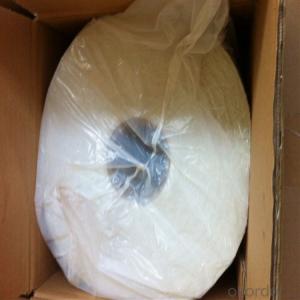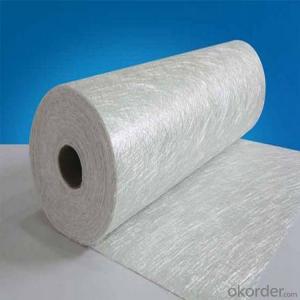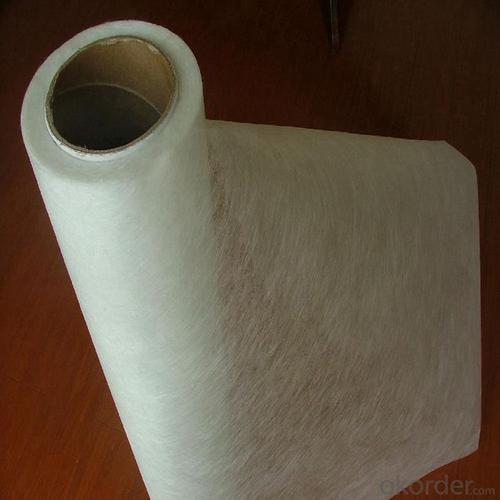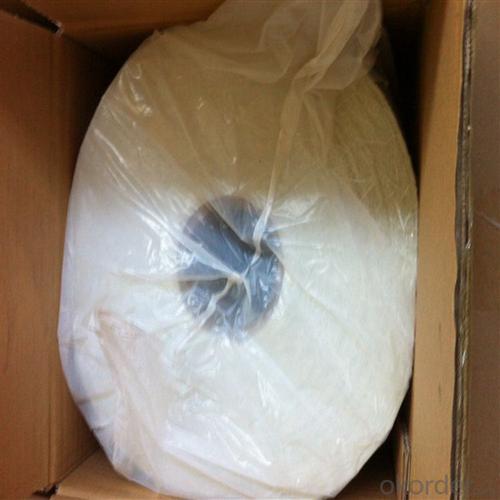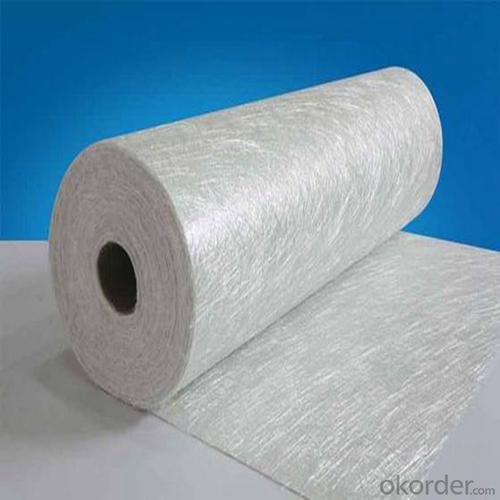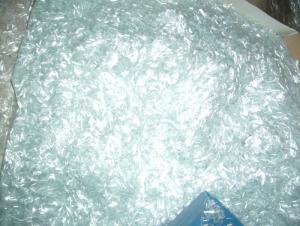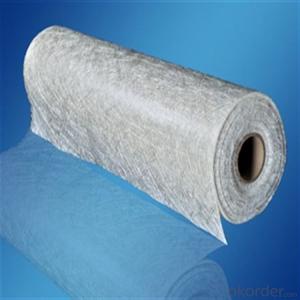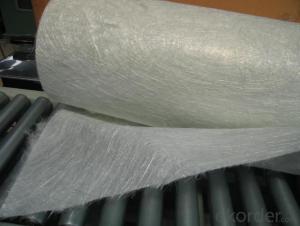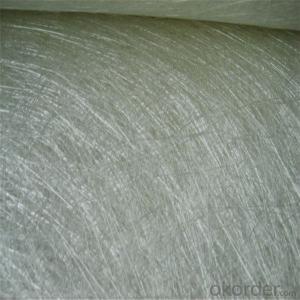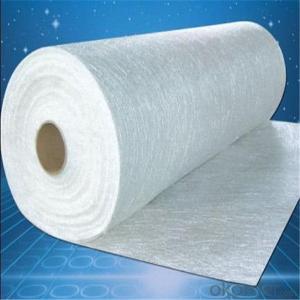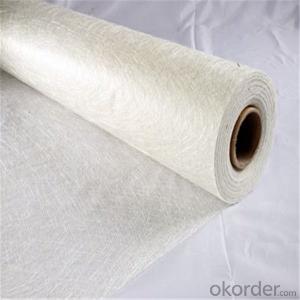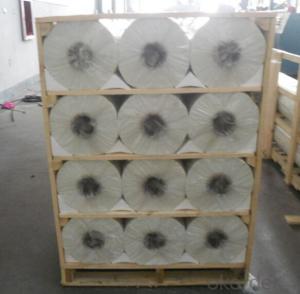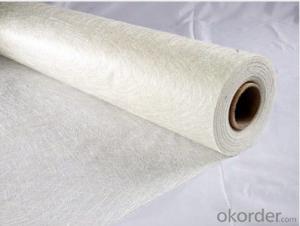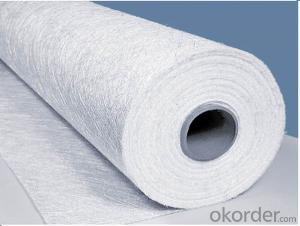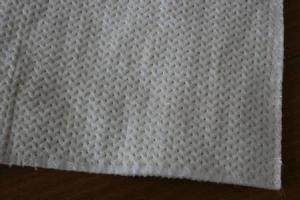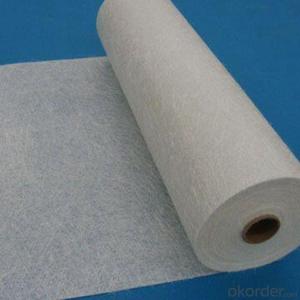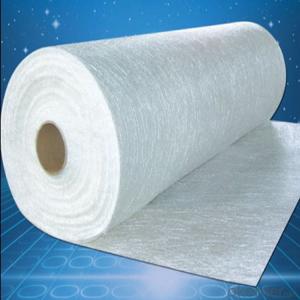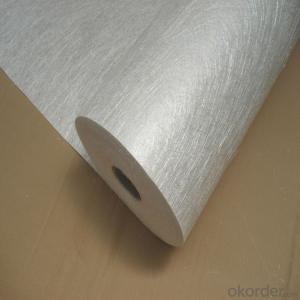Fiberglass 1.5oz X 50 Chopped Strand Mat for Roof Translucent Clear Panel Sheet FRP Panel
- Loading Port:
- China main port
- Payment Terms:
- TT OR LC
- Min Order Qty:
- 50 kg
- Supply Capability:
- 10000 kg/month
OKorder Service Pledge
OKorder Financial Service
You Might Also Like
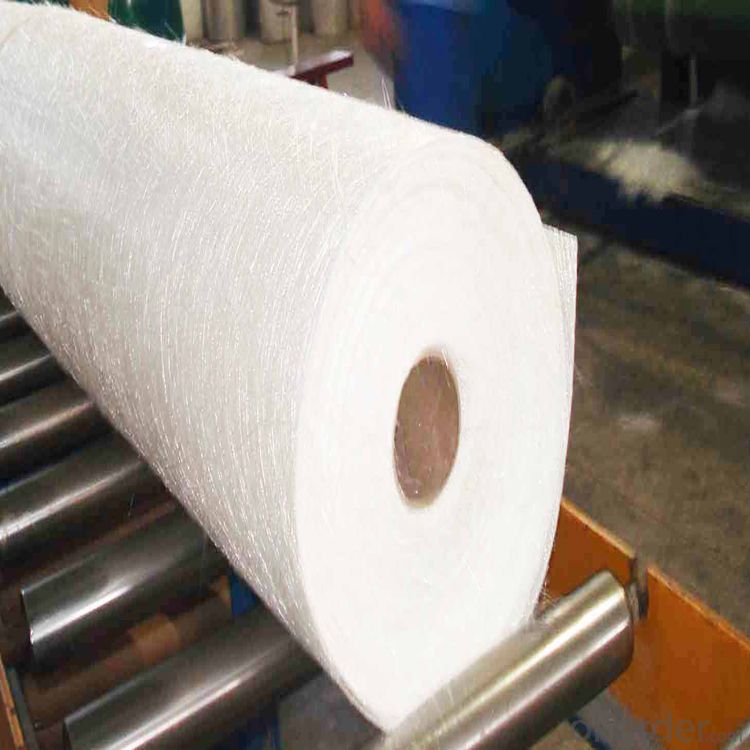
Product Description:
Chopped strand mat is made from chopped glass fibers, which are bonded with powder or emulsion binders. It can be used in hand lay-up process and continuous laminating process to produce FRP products, such as plates, lighting board, hull, bathtub, cooling towers, anti-corrosion materials, vehicles.
Features:
Uniform thickness, softness and hardness good.
Good compatibility with resin, easy completely wet-out.
Fast and consistent wet-out speed in resins and good manufacturability.
Good mechanical properties, easy cutting.
Good cover mold, suitable for modeling complex shapes.
Application:
fiberglass thickness is suitable for application by hand lay-up, reinforce and machine FRP molding,
including interior decoration of vehicles, boat hulls, complete set of sanitary equipment, anticorrosive pipes, tanks, building materials, tables, chairs, panels and all kind of composite FRP products.
Specifications:
Item | Over Density | Moisture Content | Chop Density | Polyester Yarn | Width |
(g/m2) | (%) | (g/m2) | (g/m2) | (mm) | |
EMK300 | 309.5 | ≤0.15 | 300 | 9.5 | 50-3300 |
EMK380 | 399 | 380 | 19 | ||
EMK450 | 459.5 | 450 | 9.5 | ||
EMK450 | 469 | 450 | 19 | ||
EMC0020 | 620.9 | 601.9 | 19 | ||
EMC0030 | 909.5 | 900 | 9.5 |
Special products are available according to customer’s requirement.
Product Packaging:
Each Surface Tissue is wound onto a paper tube which has an inside diameter of 76mm and the mat roll has a diameter of 330mm. The mat roll is wrapped up with plastic film,and then packed in a cardboard box or wrapped up with kraft paper. The rolls can be vertically or horizontally placed. For transportation, the rolls can be loaded into a cantainer directly or on pallets.
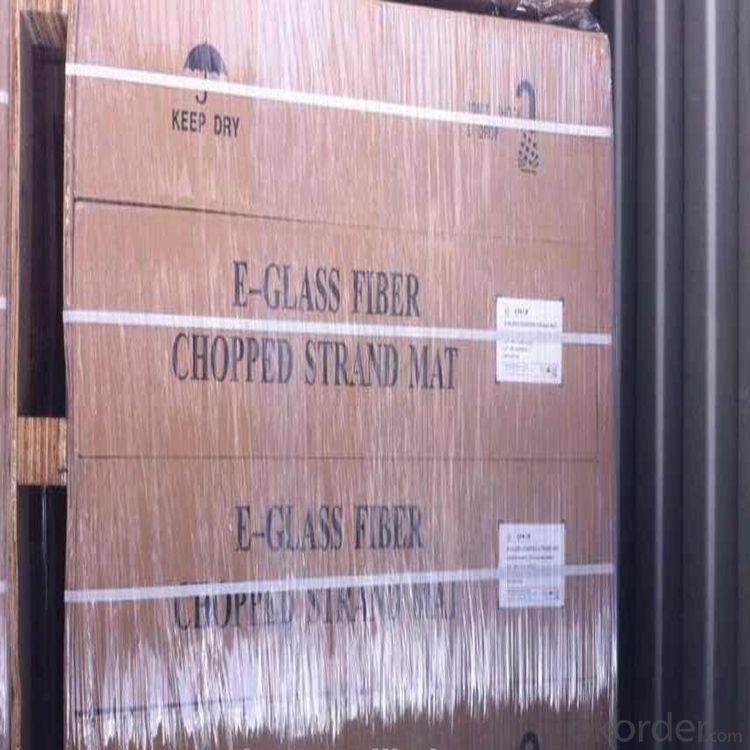
Product Storage:
Unless otherwise specified, Chopped Strand Mat should be stored in a dry, cool and rain-proof area. It is recommended that the room temperature and humidity should be always maintained at 15℃~35℃ and 50%~75% respectively.
Company Information
CNBM (China National Building Material) Group is the largest comprehensive building materials group in China that in integrate scientific research, manufacturing and logistics into one entity. The largest building materials and equipment specialists in China. Upon State Council approval, today CNBM owned more than 300 subordinate manufacturing factories and servicing companies. There are 6 fully owned public listed companies and 11 partially owned with substantial shares public listed companies. In many of these fields, CNBM is playing the leading role in the building industry in the country.
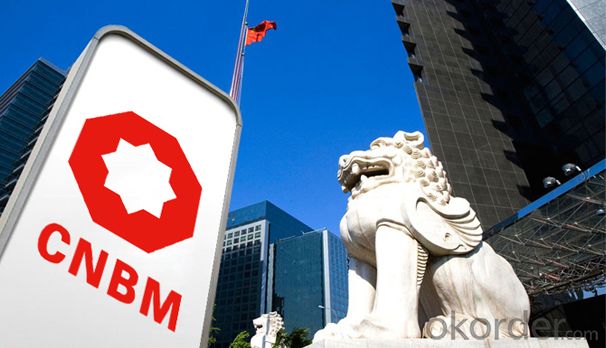
Order Information
Ordering please specify:
1. the product code, 2. weight, 3. width, 4. order quantity, 5. packaging, 6. special requirements please specify.
FAQ:
1. How long will you get reply?
Any inquiry will be replied within 24 hours. Usually we will reply within 12 hours.
2. How long is warranty period?
We provide 3 year warranty period.
3. What is your MOQ?
Any order quantity is available.
4. Can you provide sample?
Yes, samples are in stock. we can offer free sample for you.
5. Payment terms?
We can accept L/C, T/T, Western Union, Paypal etc.
6. Do you offer OEM service?
Yes, we can print customers’ logo on the packaging;
And the size and specification can be produced and design according to your demand.
7. What is the Production Lead Time?
15-20 days for bulk production after confirm the order.
- Q: Is fiberglass chopped strand suitable for applications requiring electrical conductivity?
- Fiberglass chopped strand, unfortunately, is unsuitable for applications where electrical conductivity is needed. Fiberglass, being an insulating material, does not possess the ability to conduct electricity. In cases where electrical conductivity is necessary, it is advisable to explore alternative materials like metals or conductive polymers.
- Q: How is the fiber distribution in fiberglass chopped strand ensured?
- The fiber distribution in fiberglass chopped strand is ensured through a combination of manufacturing techniques and quality control measures. During the production process, the glass fibers are chopped into predetermined lengths and then mixed with a binding agent. This mixture is then spread evenly onto a conveyor belt or a rotating drum, where it is further processed. One of the key steps in ensuring fiber distribution is the use of a mechanical device, such as a comb or a rake, which aligns and separates the fibers as they are being spread. This helps to prevent clumping and promotes an even dispersion of the fibers. In addition to mechanical devices, manufacturers also employ various techniques to monitor and control the fiber distribution. For example, sensors and cameras may be used to inspect the fiber mat and detect any irregularities or areas of poor distribution. This allows for adjustments to be made in real-time to ensure consistent and uniform fiber distribution. Furthermore, quality control measures are implemented throughout the production process. Random samples of the fiberglass chopped strand are regularly taken and tested for fiber distribution. These samples are analyzed using techniques such as microscopy or image analysis to measure the length and alignment of the fibers. By combining these manufacturing techniques and quality control measures, the fiber distribution in fiberglass chopped strand is carefully controlled and ensured to meet the desired specifications. This helps to maintain the structural integrity and performance of fiberglass products in various applications, such as in the construction, automotive, and aerospace industries.
- Q: What are the typical thermal expansion properties of chopped strand composites?
- The typical thermal expansion properties of chopped strand composites can vary depending on the specific materials used and the manufacturing process. However, in general, chopped strand composites tend to have lower thermal expansion coefficients compared to traditional materials such as metals. Chopped strand composites are made by combining reinforcing fibers, such as fiberglass or carbon fibers, with a polymer matrix, such as epoxy or polyester. The fibers provide strength and stiffness to the composite, while the matrix holds them together and protects them from external factors. The thermal expansion properties of chopped strand composites are primarily influenced by the thermal expansion coefficients of the fibers and the matrix material. Fiberglass, for example, has a relatively low thermal expansion coefficient, which means it expands and contracts less with changes in temperature. This can make chopped strand composites more dimensionally stable compared to materials like metals, which have higher thermal expansion coefficients. Additionally, the polymer matrix used in chopped strand composites can also affect their thermal expansion properties. Different types of polymers have varying thermal expansion coefficients, and the specific matrix material chosen can be tailored to optimize the composite's overall performance and thermal expansion characteristics. Overall, chopped strand composites tend to exhibit lower thermal expansion properties compared to metals, making them suitable for applications where dimensional stability is important. However, it is important to note that the exact thermal expansion properties can vary depending on the specific materials and manufacturing processes used, so it is necessary to consult the manufacturer or technical specifications for precise information.
- Q: How is fiberglass chopped strand measured?
- The typical measurement for fiberglass chopped strand pertains to its length. It refers to the average length of the individual glass fibers contained within the strand. This particular measurement holds significance as it directly impacts the strength and overall performance of fiberglass in a variety of applications. Depending on the intended purpose, chopped strand commonly ranges from a few millimeters to several centimeters in length. It is essential to specify this measurement in either inches or millimeters and make a careful selection based on the specific project or product requirements.
- Q: Can fiberglass chopped strand be used for reinforcing rubber materials?
- Yes, fiberglass chopped strand can be used for reinforcing rubber materials. The fibers provide strength and durability to the rubber, enhancing its overall performance and resistance to wear and tear.
- Q: How does the stiffness of the chopped strand affect its performance?
- The stiffness of a chopped strand plays a crucial role in determining its performance. The stiffness of a fiber refers to its resistance to bending or flexing when subjected to external forces. A higher stiffness in chopped strands typically leads to improved mechanical properties in the final product. When incorporated into a composite material, a stiff chopped strand can enhance the strength, rigidity, and dimensional stability of the composite. This is especially important in applications that require high structural integrity, such as automotive parts, aerospace components, or sports equipment. The stiffness of chopped strands also affects their ability to transfer and distribute stress within the composite matrix. A stiffer fiber can efficiently transfer loads and distribute them evenly across the composite, preventing localized stress concentrations that could lead to material failure. This is particularly crucial in dynamic or high-stress environments, where the chopped strand needs to withstand constant or repetitive loading. Moreover, the stiffness of the chopped strand influences its interfacial bonding with the matrix material. A stiffer fiber can provide better mechanical interlocking and adhesion with the matrix, resulting in improved load transfer between the two components. This enhanced interfacial bonding helps to maximize the overall mechanical performance of the composite material. However, it is important to note that the optimal stiffness of a chopped strand depends on the specific application and the desired performance characteristics of the final product. While a high stiffness is generally beneficial, there might be cases where a lower stiffness is preferred to achieve specific properties such as flexibility or impact resistance. In summary, the stiffness of a chopped strand significantly impacts its performance. A higher stiffness generally leads to improved mechanical properties, enhanced load transfer, and better interfacial bonding. However, the optimal stiffness should be carefully chosen based on the specific requirements of the application to achieve the desired performance characteristics.
- Q: Is fiberglass chopped strand easy to handle and process?
- Yes, fiberglass chopped strand is relatively easy to handle and process. It is lightweight and can be easily cut and shaped to fit various applications. Additionally, it can be mixed with resins or other materials to create composite products.
- Q: How does the fiber orientation affect the impact resistance of fiberglass chopped strand composites?
- The fiber orientation significantly influences the impact resistance of fiberglass chopped strand composites. When the fibers are aligned in the direction of impact, they can effectively distribute and absorb the applied load, resulting in improved impact resistance. Conversely, if the fibers are randomly oriented or misaligned, the load distribution is less efficient, leading to reduced impact resistance. Therefore, proper fiber orientation plays a critical role in enhancing the impact resistance of fiberglass chopped strand composites.
- Q: Is fiberglass chopped strand lightweight?
- Yes, fiberglass chopped strand is lightweight.
- Q: Can fiberglass chopped strand be used in electrical applications?
- Yes, fiberglass chopped strand can be used in electrical applications. It is commonly used as a reinforcement material in the manufacturing of electrical components, such as circuit boards, insulators, and connectors. Its excellent electrical insulation properties make it a suitable choice for these applications.
Send your message to us
Fiberglass 1.5oz X 50 Chopped Strand Mat for Roof Translucent Clear Panel Sheet FRP Panel
- Loading Port:
- China main port
- Payment Terms:
- TT OR LC
- Min Order Qty:
- 50 kg
- Supply Capability:
- 10000 kg/month
OKorder Service Pledge
OKorder Financial Service
Similar products
Hot products
Hot Searches
Related keywords

